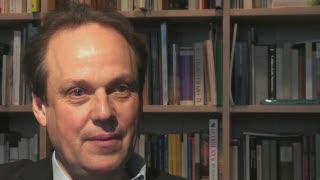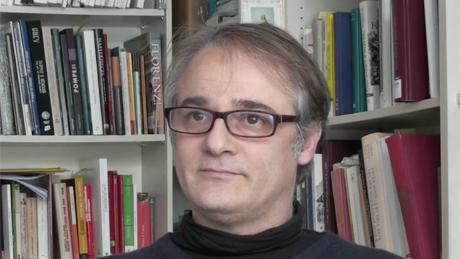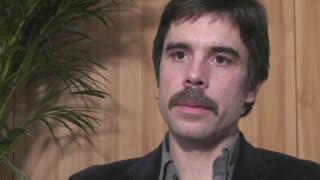Practical experience and applications—from glass manufacture to artillery—shaped Galileo Galilei’s thinking on physics. As a young mathematician, he dedicated himself to problems of mechanics. Thanks to the intercession of his patron Guidobaldo del Monte, he finally received a professorship in mathematics at the University of Padua. “Guidobaldo’s workshop and his enthusiasm as an instrument-maker, engineer, and military adviser left a lasting impression on Galileo,” observes Jürgen Renn, director of the Max Planck Institute for the History of Science in Berlin. One of Guidobaldo’s surviving notebooks gives an insight into the two men’s studies of the trajectory of projectiles in 1592. They colored small balls with ink and fired them across an inclined plane. Was the line of the inked traces left by the balls a parabola? A hyperbola? A reversed catenary curve? Later, Galileo would come back to these experiments in his groundbreaking work on mechanics, the Discorsi.

“The other Galileo” Jürgen Renn in conversation with Thomas de Padova. Interview (in German) from 13.02.2014. © Max Planck Institute for the History of Science.
Once in Padua, Galileo followed his patron’s example and set up a workshop. He was working on ballistics and fortress construction there when, in 1609, he heard of an optical magnification instrument said to have been built by Dutch spectacle-makers. Galileo could not stop thinking about this tube with its two lenses. Science historian Matteo Valleriani has deciphered an unusual shopping list that the mathematician wrote in November 1609 on the back of a letter from Venice. He explains: “The curious miscellany—cannon balls, organ pipes, alumina, felt, et cetera—lists the ingredients that Galileo believed were necessary to produce new and better lenses with his own hands.” With his outstanding telescope, Galileo discovered mountains and valleys on the moon, four of Jupiter’s moons, and countless other previously unknown celestial bodies. He was feted as the “Columbus of the heavens” and appointed court philosopher to the Medicis in Florence.

“Galileo on his way to fame” Matteo Valleriani in conversation with Thomas de Padova. Interview (in German) from 23.01.2014. © Max Planck Institute for the History of Science.
After this unexpected career success and further controversial astronomical discoveries, Galileo became an increasingly open advocate of Copernican cosmology. In his zeal, he did not shrink from reinterpreting Scripture accordingly. The Medici courtier thus maneuvered himself into a precarious situation, and the Inquisition took action. In 1616, a decree banned Copernicus’ work until it was corrected in line with Church thinking. The decree did not mention Galileo by name, but the Cardinal Inquisitor in Rome, Roberto Bellarmino, warned him that in future he must no longer propound the Copernican theory as fact.

“Galileo´s World View” Jochen Büttner in conversation with Thomas de Padova. Interview (in German) from 04.02.2014. © Max Planck Institute for the History of Science.
Under Urban VIII’s pontificate, which began in 1623, Galileo was received by the Pope as a “brother” for long conversations. Galileo thus felt encouraged to publish his astronomical findings. He believed that his theory on the origin of the tides could provide proof of the earth’s motion. Historian of science Jochen Büttner has studied the surviving documents, searching for the experiential basis upon which Galileo based his idiosyncratic theory of the tides and his view that tidal flow resulted from a moving earth. The fact that Galileo’s theory was later proved invalid has not diminished his reputation. That is because the publication of his pro-Copernican treatise was what led to Galileo’s momentous rift with the Pope. At the low point of his pontificate, Urban VIII dropped his favorite Galileo along with several other of his confidants, and Galileo had to recant the Copernican theory during an Inquisition process in 1633. He was sentenced to house arrest for the remainder of his life.
The book of nature is written in the language of mathematics, argued Galileo, “and the letters are triangles, circles, and other geometrical figures, without whose help it is impossible to comprehend a single word of it; without which one wanders in vain through a dark labyrinth.” Galileo’s Discorsi, written in old age without the Copernican pathos of his earlier works, is a pioneering demonstration of the mathematical describability of nature. Yet in this masterpiece, the mathematician also thanks the expert technicians of the Venetian Arsenal. Galileo had spent years at the Arsenal, Venice’s naval base and shipyard—where questions of shipbuilding, hydraulic engineering, and artillery converged—studying the workings of lifting machines or the strength of materials. Jürgen Renn sums it up: “The real catalysts in transforming the knowledge of preclassical physics were the challenging objects of contemporary technological practice.”
